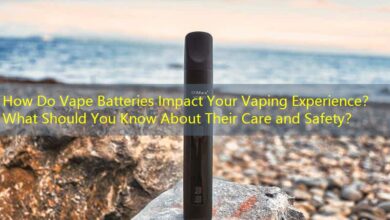Vaping Health Risks: A Comparative Review of Popcorn Lung and Diacetyl Exposure
Understanding Popcorn Lung and Its Connection to Vaping
In recent years, vaping has surged in popularity, especially among younger demographics seeking alternatives to traditional smoking. Alongside this trend, however, has emerged a concerning health issue known as “popcorn lung.” This article explores the risks associated with vaping, particularly how certain chemicals in vape products can lead to popcorn lung—a term commonly used to describe a serious respiratory condition formally known as bronchiolitis obliterans.
The Science Behind Popcorn Lung
Popcorn lung derives its name from an incident in which workers at a microwave popcorn plant experienced severe lung damage due to inhaling diacetyl, a chemical flavoring agent used in butter flavoring. Research has shown that exposure to diacetyl can lead to significant lung damage, causing symptoms similar to those seen in the chronic obstructive pulmonary disease (COPD) patient population.
In the context of vaping, diacetyl is often present in flavored e-liquids. While many vape manufacturers have made efforts to eliminate this chemical, it can still be found in some products on the market. The inhalation of aerosolized diacetyl raises serious concerns about the long-term health effects for users, particularly when used habitually.
How Vaping Products Expose Users to Diacetyl
Vaping products come in a myriad of flavors, but not all are created equal. A study conducted by researchers from the University of California, San Francisco, found that many flavored e-cigarettes contained diacetyl, confirming suspicions about the potential dangers associated with flavored vaping products.
The presence of diacetyl in e-cigarettes poses significant risks, particularly to young people who may be more prone to developing such health issues. Prolonged exposure to diacetyl could result in the onset of popcorn lung, a condition that is irreversible and severely affects lung function.
Comparative Table of Diacetyl Levels in Common Vaping Products
| Product Type | Diacetyl Content (parts per million) |
|---|---|
| Traditional Cigarettes | 0.25 |
| Flavored E-cigarettes | 0.021 – 0.12 |
| Unflavored E-liquids | 0 |
The table clearly illustrates the varying levels of diacetyl found in different types of products, underscoring the risk users face when selecting flavored vape products.
Legal and Regulatory Actions
Due to the increasing awareness surrounding popcorn lung and vaping, regulatory bodies are taking action. The Food and Drug Administration (FDA) is enforcing stricter regulations on the sale and marketing of e-cigarettes, particularly those with questionable ingredients.
As a result, some manufacturers are reformulating their products to remove harmful chemicals like diacetyl entirely. Въпреки това, this shift may not be sufficient, as consumers remain largely unaware of what goes into their vaping products.
Common Questions Regarding Popcorn Lung and Vaping
What are the symptoms of popcorn lung?
The symptoms of popcorn lung may initially mimic those of asthma and include coughing, wheezing, and shortness of breath. As the condition progresses, individuals may experience severe respiratory distress and decreased lung function.
Can popcorn lung be reversed?
Unfortunately, popcorn lung is considered irreversible. Once lung damage has occurred due to prolonged exposure to harmful substances like diacetyl, recovery is unlikely, making prevention critical.
What should I look for in vape products to avoid popcorn lung?
To reduce the risk of developing popcorn lung when vaping, it is advisable to choose products specifically labeled as “diacetyl-free.” Moreover, opting for unflavored e-liquids may significantly decrease exposure to this harmful chemical, thus protecting lung health. Always research and choose reputable brands that prioritize consumer safety.





